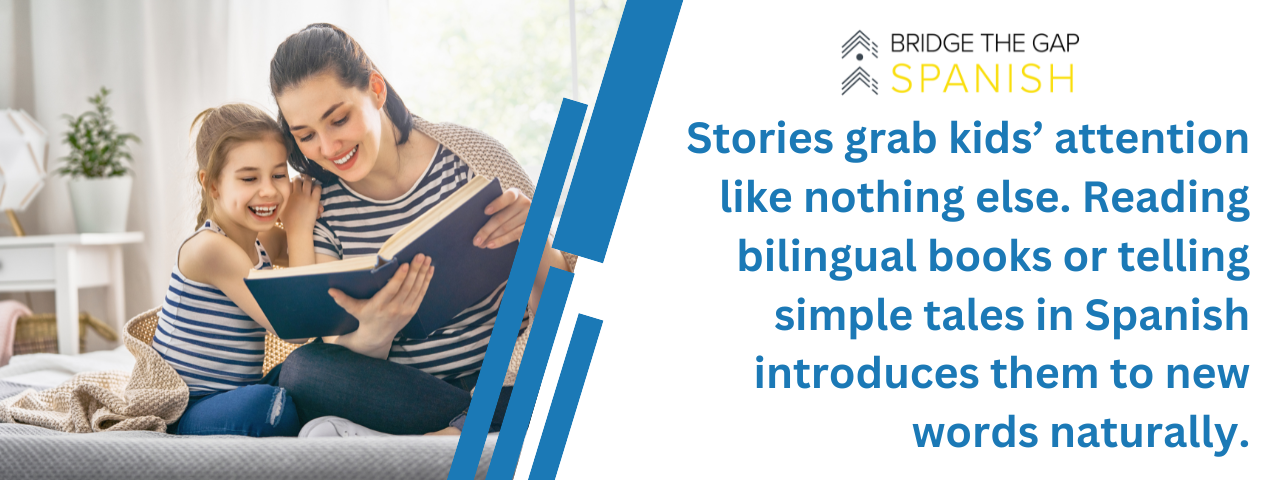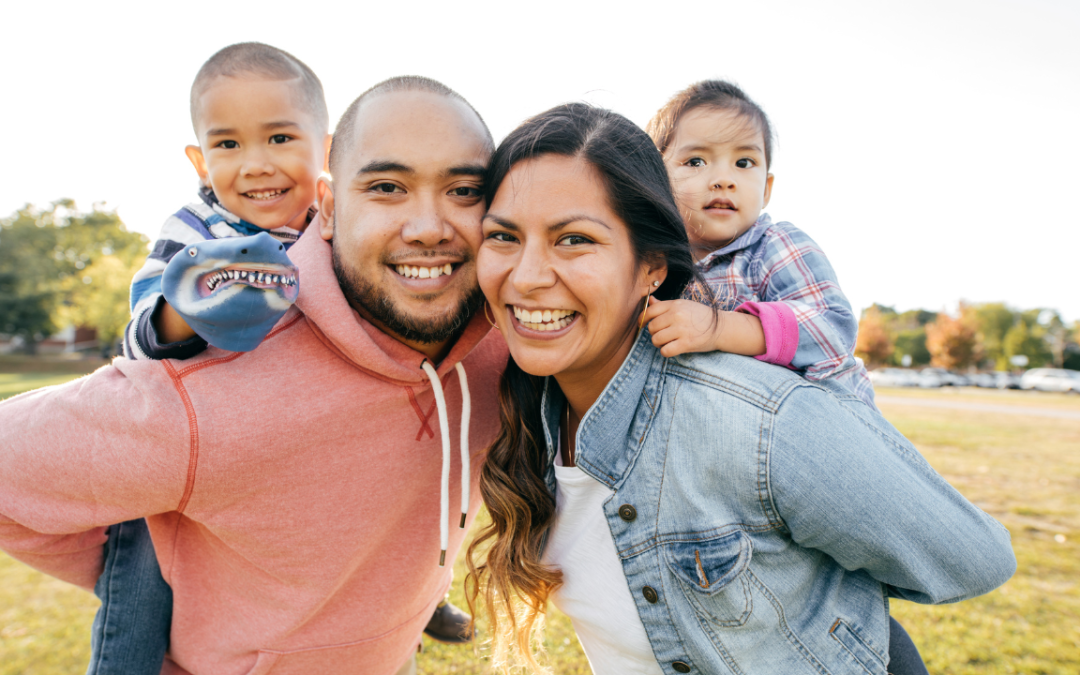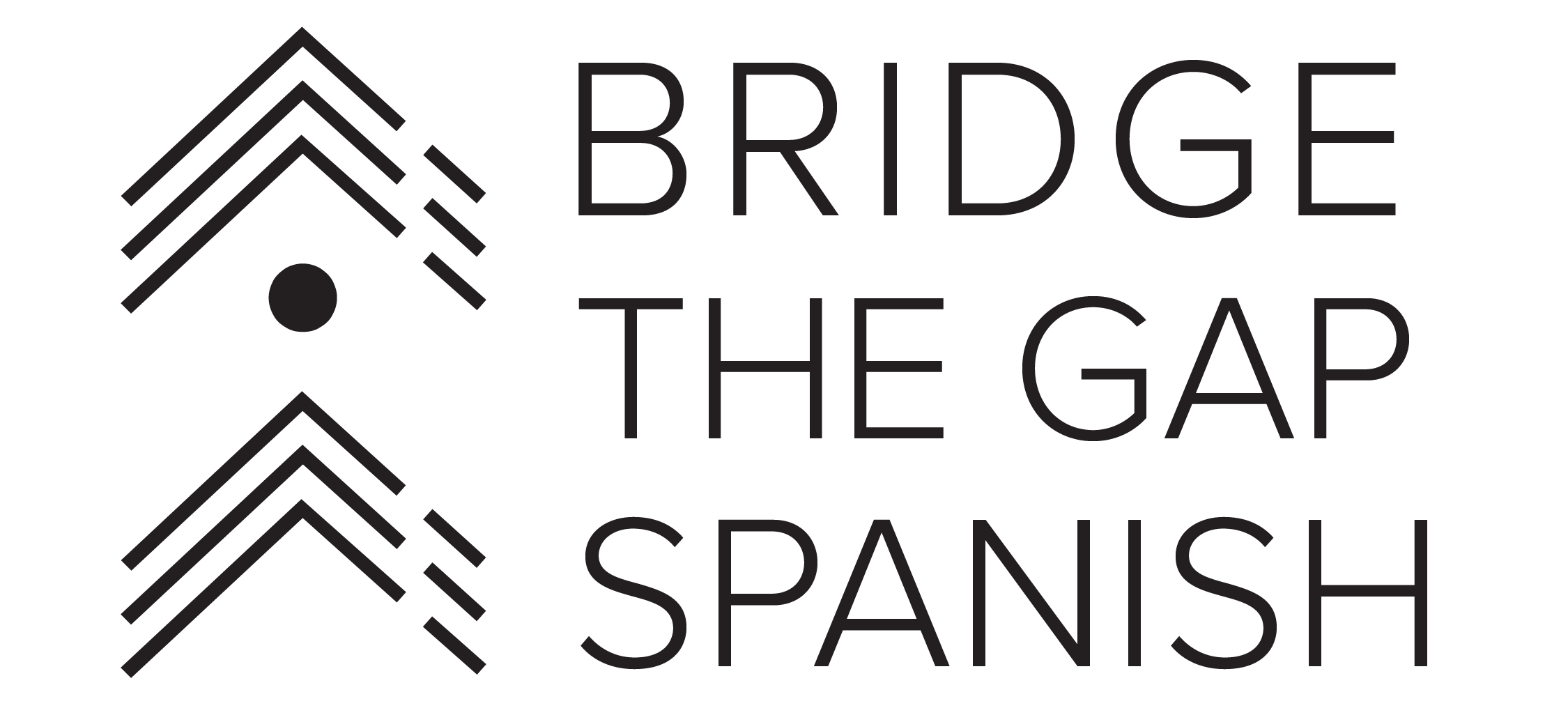Want to help your kids learn Spanish but not sure where to start?
You’re not alone. It feels like a big task, but with the right approach, it gets fun.
Not to mention deeply meaningful, and fitting easily into your daily life.
This guide breaks down 10 simple, playful ways to make Spanish part of your everyday routine so your kids can pick it up naturally—and actually enjoy the process. And here’s something many parents don’t realize: the more Spanish you learn yourself, the easier it is to guide them. You don’t have to be fluent—you just have to be willing to learn alongside them, so you can bring Spanish into real-life moments in a way that feels natural for your family.
Let’s start with one of the easiest and most effective places to begin—your daily routines.
1. Start with Daily Routines
The easiest way to bring Spanish into your kids’ lives is through the little things you already do each day. Say “¡Buenos días!” (Good morning!) when they wake up, name foods at breakfast, or talk about colors and toys as you go about your routine. Kids learn best through repetition, so hearing Spanish in familiar moments helps new Spanish words sink in naturally.
Weave Spanish into meals, bedtime, or chores. Labeling things around the house or narrating your actions in Spanish turns everyday life into an easygoing learning space and is a simple way to teach Spanish without adding any pressure or stress.
👉 Want a head start with mealtime? Check out our blog post: 10 Helpful Spanish Phrases for Ordering at a Mexican Restaurant.
2. Use Interactive Storytelling
Stories grab kids’ attention like nothing else. Reading bilingual books or telling simple tales in Spanish introduces them to new words naturally, without it feeling like homework. Pause and ask questions about the story, encourage your kid to chime in, and make it a back-and-forth conversation.
You might even set aside a comfy spot for your Spanish books—a blanket, a few pillows, and a little stack of favorites. When storytime feels cozy and inviting, kids are more likely to settle in, listen, and soak up the language as they enjoy the story.
3. Play Language-Based Games
Games make learning Spanish way more fun and way less intimidating. Whether it’s a scavenger hunt with Spanish clues, matching cards, or puppet play, these activities help kids absorb new words without even realizing they’re practicing. Acting out everyday situations in Spanish also builds confidence and makes them eager to speak.
The best part? You can shape the games around what your child already loves and switch them up often, so it never gets boring. When it feels like play, they’ll be the ones asking to do it again.
4. Incorporate Music and Movement
Kids are always on the move, so put that energy to work for Spanish practice. Sing songs together, dance to Latin music, and let them jump in with the actions. They’ll be having fun—and picking up new vocabulary—without even thinking about it.
Try Spanish versions of familiar songs like “En la granja de mi tío” (Old MacDonald in Spanish) or “Cabeza, Hombros, Rodillas y Pies” (Head, Shoulders, Knees, and Toes). When kids connect words with movement and music, the language just sinks in more easily. It’s a fun, effective way to learn—especially for kids who do best when they’re up, moving, and engaged.
5. Leverage Screen Time Wisely
Screen time doesn’t have to be the enemy—especially if you choose tools that help reinforce what your kids are learning. Educational apps like Duolingo ABC or Gus on the Go, YouTube channels like Super Simple Español, and interactive shows like Pocoyó (in Spanish) or Canticos can build vocabulary and keep kids engaged.
Look for content that encourages your child to repeat words, sing along, or respond out loud, not just watch passively. A little intentional screen time can go a long way in supporting everything else you’re doing together.
6. Encourage Conversational Practice
The best way to get kids comfortable speaking Spanish? Use it often—and make it part of everyday life. Ask simple questions in Spanish during meals, like ¿Quieres más? (Do you want more?), name objects around the house, or start a “phrase of the day” challenge where everyone tries to use one new expression.
You could even have a Spanish-only hour or turn it into a game—whoever slips into English first loses! Keep it playful and low-pressure so kids feel free to try, make mistakes, and keep going. That’s where the real learning happens.
7. Try Spanish Classes (Online or In Person)
Whether online or in person, Spanish classes designed for kids can offer structure, fun, and expert guidance without putting it all on your shoulders. Many include songs, games, and storytelling that match how kids learn best. And when taught by a native Spanish speaker, lessons bring in authentic accents and cultural touches that make the language feel real and exciting.
Both options have their perks: in-person classes offer face-to-face interaction, while online Spanish classes are flexible and easy to fit into a busy schedule. Either way, learning alongside other kids can boost confidence and motivation.
8. Take Spanish Outside
Who says learning has to stay indoors? Head out for a walk, visit a park, or hang out in the backyard and turn nature into your Spanish classroom. Point out flores (flowers), árboles (trees), pájaros (birds), or talk about the weather in Spanish. Ask questions like ¿Dónde está la mariposa? (Where’s the butterfly?) or ¿Qué color es esa flor? (What color is that flower?).
Learning in the real world helps words stick—and it shows kids that Spanish is something they can use anywhere, not just during “study time”.
9. Celebrate the Little Wins
Language learning takes time, and small wins matter. Did your child use a Spanish word without being prompted? Finish their first Spanish book? Sing a whole song on their own? Celebrate it! Praise, stickers, a mini dance party—whatever makes them feel proud.
When kids feel good about what they’ve learned, they’re more excited to keep going. Confidence builds momentum.
10. The More You Learn, the More They Learn
Want to give your kids the best shot at learning Spanish? Start with yourself. When you build your own Spanish skills, you’re better able to teach new words, explain things clearly, and weave the language into everyday life in a way that makes sense to your little ones. In doing so, you become their go-to Spanish teacher, showing them that learning a second language can happen anywhere—at the dinner table, in the car, or during playtime.
It’s not about perfection but about being present, modeling curiosity, and making Spanish part of your family culture. The more you use it together, the greater the odds of your kids growing into confident bilingual children. As your confidence grows, so does your ability to guide them naturally, without relying on apps or formal lessons alone.
Bridge the Gap Spanish: Empowering Parents to Raise Bilingual Kids
At Bridge the Gap Spanish, we help parents build the Spanish skills they need to guide their kids at home. Our lessons are practical, flexible, and designed for real life—so you can learn at your own pace and feel confident using Spanish in everyday moments with your family.
When you grow your own language skills and understanding of the language, you’re better equipped to introduce it to your little ones in a way that feels natural and fun. You become their biggest asset—the one who keeps the learning going long after the screen turns off or class ends.
If you’re ready to get started, we’ll match you with a native Spanish speaker who can help you hit the ground running. You’ll start practicing right away—so you can bring more Spanish into your home from day one. Head to our website to sign up—we can’t wait to connect with you!
Frequently Asked Questions
How can I add Spanish into my child’s daily life?
Work Spanish into everyday moments—getting ready in the morning, bedtime stories, mealtimes, even chores. Slip in new vocabulary words during these routines so it feels easy and natural. The best way to teach your child Spanish is to make it part of the little things you already do together.
What are some fun ways to help my child learn Spanish?
Try storytelling, games, and music to make learning Spanish enjoyable. Sing songs together or play music in Spanish—it’s a great way to sneak in new words and phrases. These fun moments can double as Spanish lessons, even though they just feel like play.
How can screen time help with learning Spanish?
Pick apps, videos, and shows that are made for learning Spanish. Online Spanish lessons can be a great option too—turning screen time into a chance for your child to pick up new words, songs, and phrases instead of just watching passively.
Why is conversational practice important in language learning?
Talking in Spanish helps your child remember words better and use them in real life. The more they practice, the more confident they’ll feel.
How can meeting native Spanish speakers help my child?
Going to places like a local Mexican restaurant or a market lets your child hear and use Spanish with real people. It’s a fun way to learn, feel more comfortable speaking, and engage in cultural experiences together.
Did you enjoy this post? You’ll love our 50 Easy Spanish Conversation Questions too!



